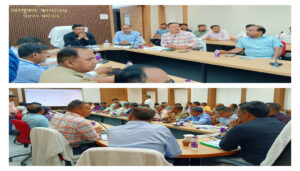
Patna: In a long-anticipated development, residents of Muzaffarpur can finally celebrate the green light for a 100-bed Employees’ State Insurance (ESI) hospital, set to be constructed in Chadhua village of the Kudhni zone. The project, delayed for over four years, gained momentum this month after the Revenue and Land Reforms Department transferred more than five acres of land to the Central Government.
The hospital, to be developed under the aegis of the Union Ministry of Labour and Employment, will cater not only to ESI beneficiaries but also to the general public, marking a significant step in improving healthcare access in Bihar’s northern district.
A Project Years in the Making
Originally approved by the central government in March 2021, the hospital project had been in limbo due to delays in land acquisition. The breakthrough came earlier this month when the State Cabinet gave its nod on April 8, followed by the formal land transfer by the Revenue and Land Reforms Department. In exchange, the Central Government will pay the Bihar Government a sum of Rs 2.09 crore.
“This is not just a win for Muzaffarpur, but a testament to the persistence of local demand and administrative follow-through,” said a senior state official. “The hospital will significantly ease the pressure on existing health facilities in the region.”
Broader Infrastructure Push
In a parallel development, the department has also transferred over six acres of land in Kachana Mouza, Pakribarawan zone, Nawada district, for the construction of a 132–133 KVA power substation. The land is now officially registered in the name of Bihar State Transmission Company Limited, which will pay Rs 5.64 crore to the state for the acquisition.
This twin push in healthcare and power infrastructure underlines Bihar’s ongoing efforts to bolster essential services in semi-urban and rural regions.
For the residents of Chadhua and surrounding areas, the ESI hospital is more than just a medical facility—it is a long-awaited promise finally nearing fulfillment. As construction plans begin to take shape, locals are hopeful this will not only improve health services but also generate employment and stimulate the local economy.





